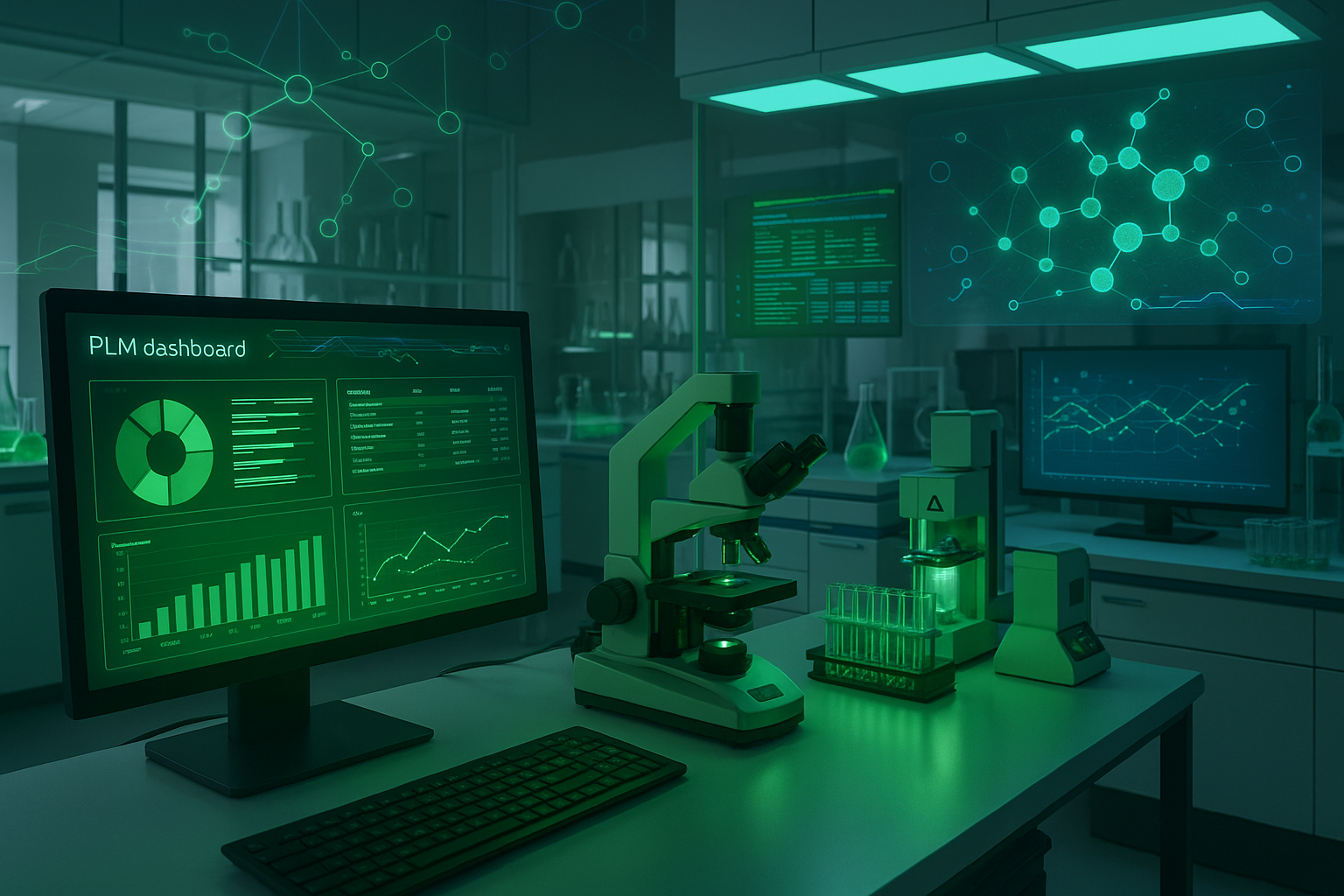ERP for Formulation Development: Bridging Chemistry R&D with Manufacturing Reality
In the chemical industry, formulation development is no longer confined to the lab bench. Today, supply chain disruptions, volatile raw material prices, and tighter compliance requirements are pushing R&D teams to make faster, smarter decisions—and that requires real-time access to operational data. This is where Enterprise Resource Planning (ERP) systems come into play.
ERP is traditionally viewed as a finance, inventory, or production tool. But for modern chemical companies, ERP can play a critical role in guiding and informing formulation decisions—especially when tightly integrated with Product Lifecycle Management (PLM) systems. This article explores how ERP supports formulation development, why synchronizing BOM data across systems is crucial, and how AI copilots like Chemcopilot can connect the dots between operations and innovation.
Why Formulators Should Care About ERP
For many R&D professionals, ERP systems feel distant—more of a manufacturing or procurement concern. But ignoring ERP creates blind spots that can lead to costly reformulations, delays, or compliance risks. ERP holds key operational data such as:
Real-time ingredient availability
Supplier-specific specifications
Pricing and cost fluctuations
Approved vendor lists
Batch traceability and historical quality data
When this data is visible to the formulation team, it becomes a strategic asset. It enables chemists to design products that are not only innovative but also manufacturable, compliant, and cost-effective.
How ERP Informs Smarter Formulation Decisions
1. Inventory and Availability During R&D
Suppose a formulator chooses a rare botanical extract for a premium product. If that ingredient isn’t stocked—or has long lead times—the launch timeline might collapse. ERP systems can flag availability in real time, helping R&D prioritize ingredients that align with existing inventory or known supply chains.
2. Dynamic Cost Awareness
R&D rarely sees the full cost implications of their decisions until later stages. But when ERP cost data is fed into PLM or AI copilots, chemists can simulate multiple BOM versions and instantly compare cost projections. This ensures early-stage choices don’t derail profit margins downstream.
3. Supplier-Specific Data for Formulation Constraints
Not all ingredients are created equal. ERP holds supplier-specific specs—such as purities, batch performance, or certifications—that can directly impact how a formulation behaves. Integrating that with formulation tools ensures better predictability and faster validation.
Synchronizing BOMs Between ERP and PLM
The Bill of Materials (BOM) is where ERP and PLM converge—but too often, they're out of sync. Formulators may create prototype BOMs in PLM, while manufacturing uses ERP BOMs to order and produce. If versions don’t align, it results in:
Material mismatches
Regulatory missteps
Delays in approvals or production
A well-integrated system ensures BOMs flow bi-directionally, keeping ERP and PLM aligned across formulation changes, regulatory updates, and supply chain shifts. For example, when Chemcopilot suggests an alternative ingredient based on cost or toxicity, that change can update both the formulation logic in PLM and the procurement list in ERP automatically.
Use Case: Reformulating After a Supply Disruption
Imagine a scenario where a key emulsifier suddenly becomes unavailable due to geopolitical constraints. ERP flags the disruption. That data feeds into PLM, triggering a reformulation workflow. Chemcopilot—connected to both systems—suggests compatible alternatives based on performance profiles and cost-effectiveness. Once selected, the new BOM is automatically pushed to ERP for sourcing and production planning.
This closed-loop response turns what used to be a weeks-long crisis into a two-day agile process.
Bringing ERP to the Bench: The Future of Smart Formulation
AI copilots are changing how R&D operates. When connected to ERP and PLM, tools like Chemcopilot can pull operational data in real time to guide every formulation decision. Here's how:
Live costing: Instant simulations of how a formula change impacts cost
Sustainability insights: Real-time CO₂ impact from ERP-linked LCA databases
Smart substitutions: AI suggestions based on supply data and regulatory profiles
Process integration: One-click updates from formulation software into ERP for batch production
This transforms formulation from a static lab activity into a dynamic, responsive, and connected business process—where decisions are based not just on science, but also on supply chain feasibility, compliance, and profit potential.
Conclusion
ERP isn't just a backend system for finance and logistics—it's becoming a critical partner in formulation development. When connected with PLM and augmented by AI tools like Chemcopilot, ERP empowers R&D to make data-driven decisions that are faster, safer, and more aligned with business realities.
If your formulation teams are still operating in isolation from ERP data, it may be time to rethink your integration strategy. Because the future of formulation isn't just about molecules—it's about real-time data, digital connectivity, and enterprise alignment.

